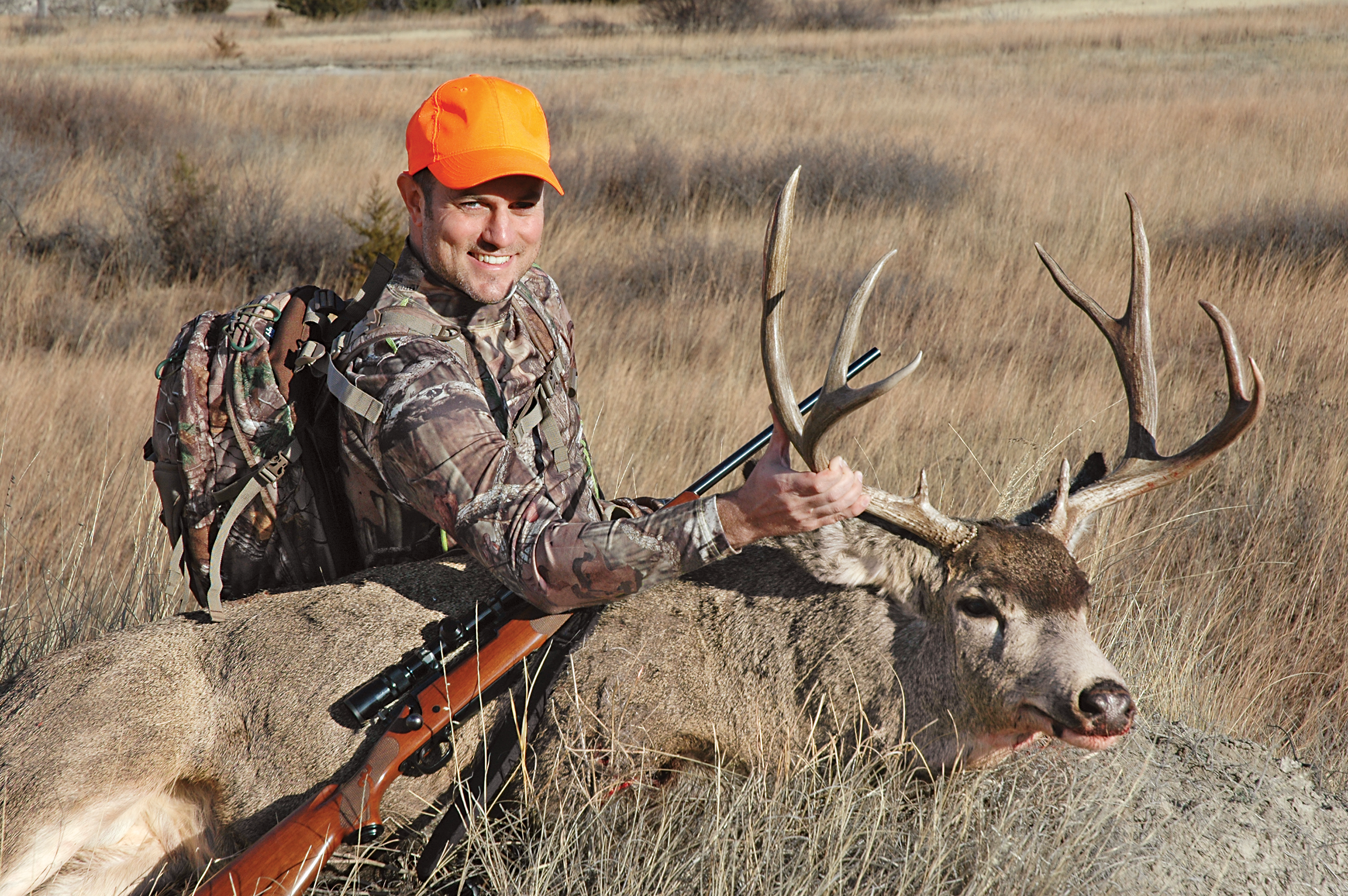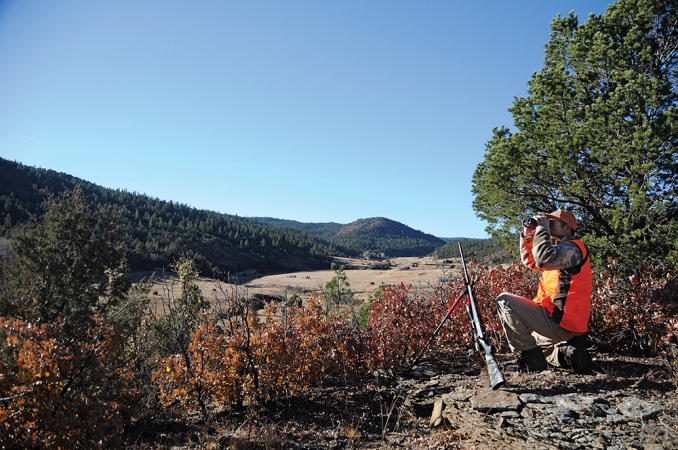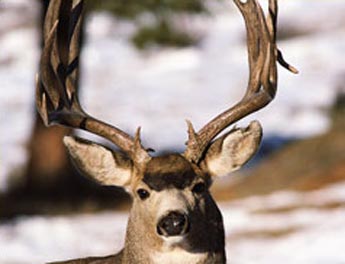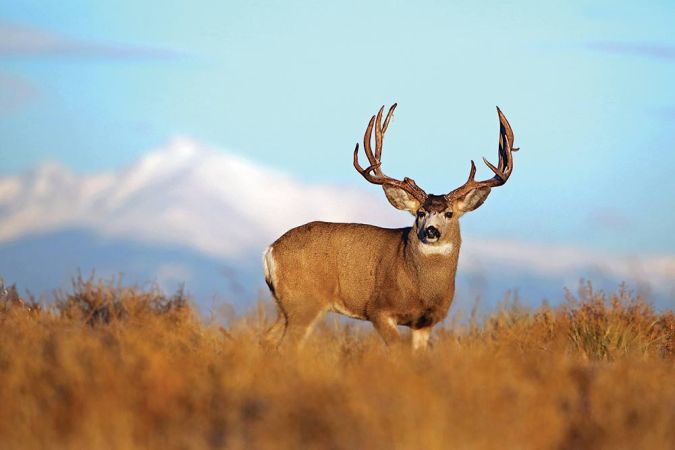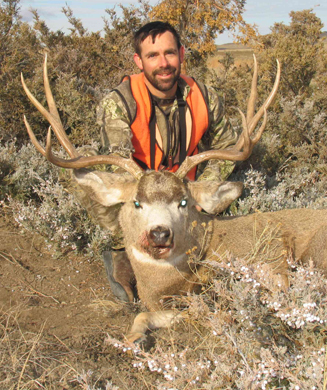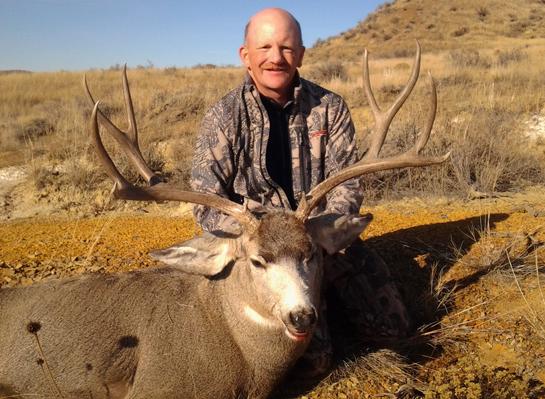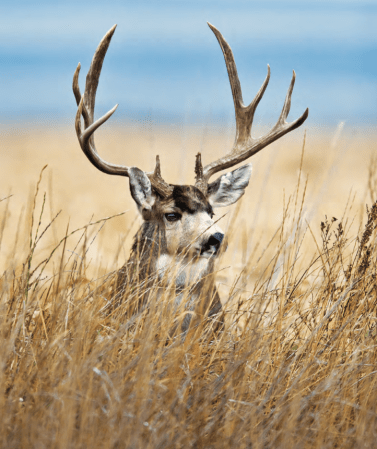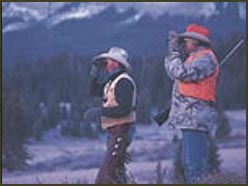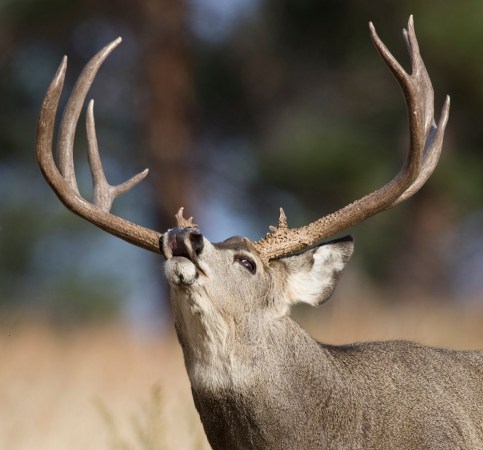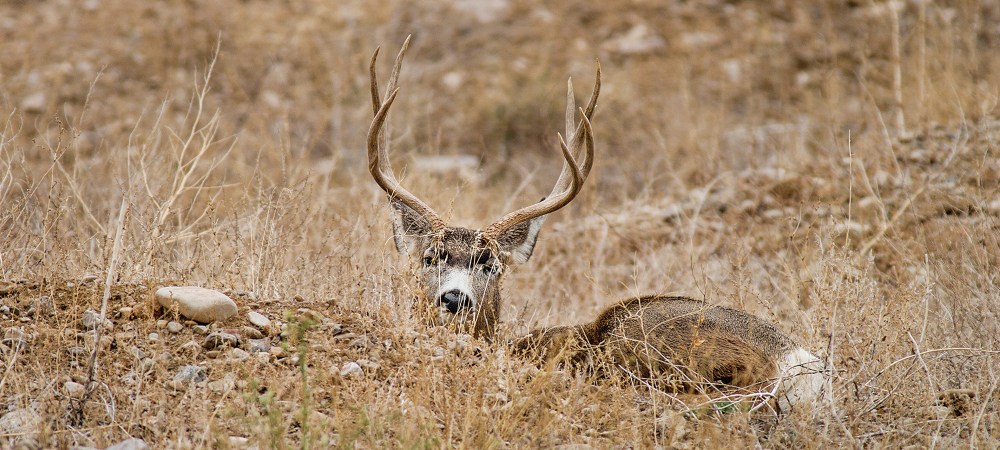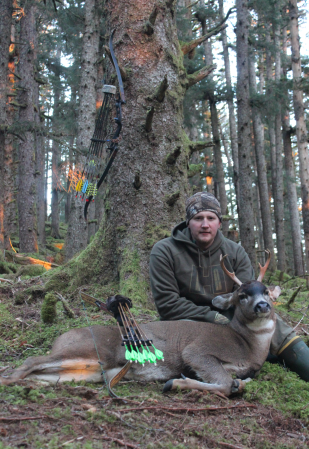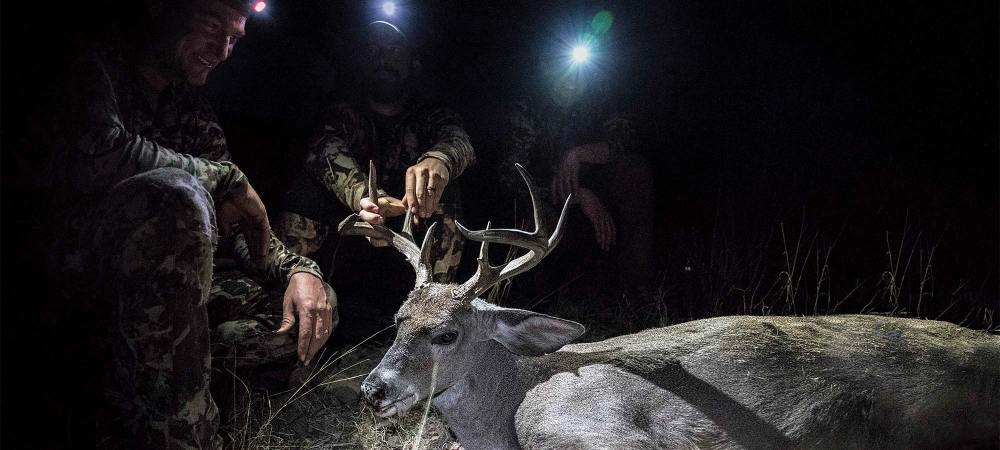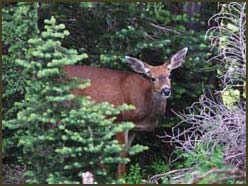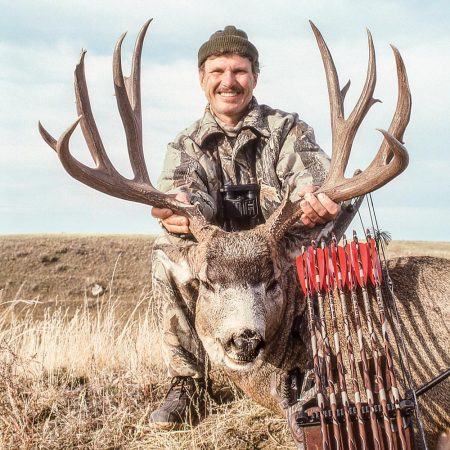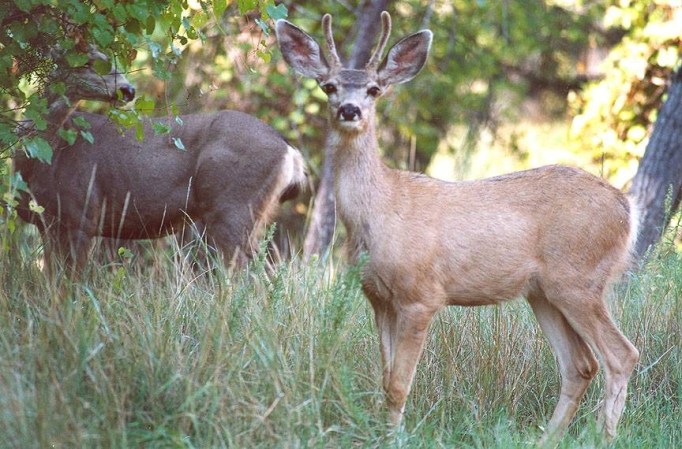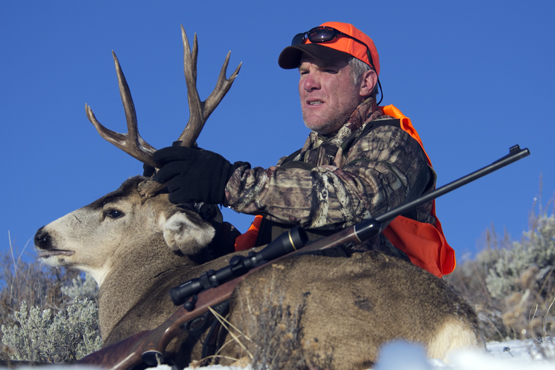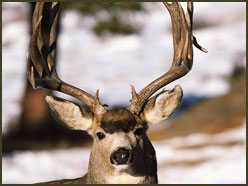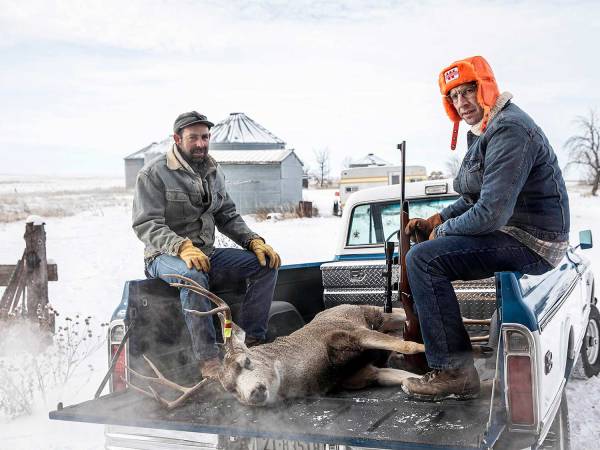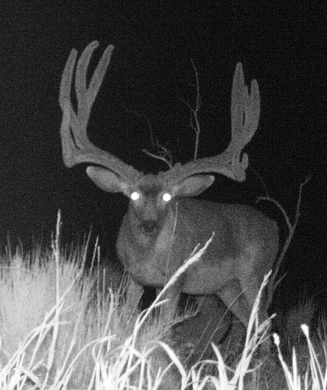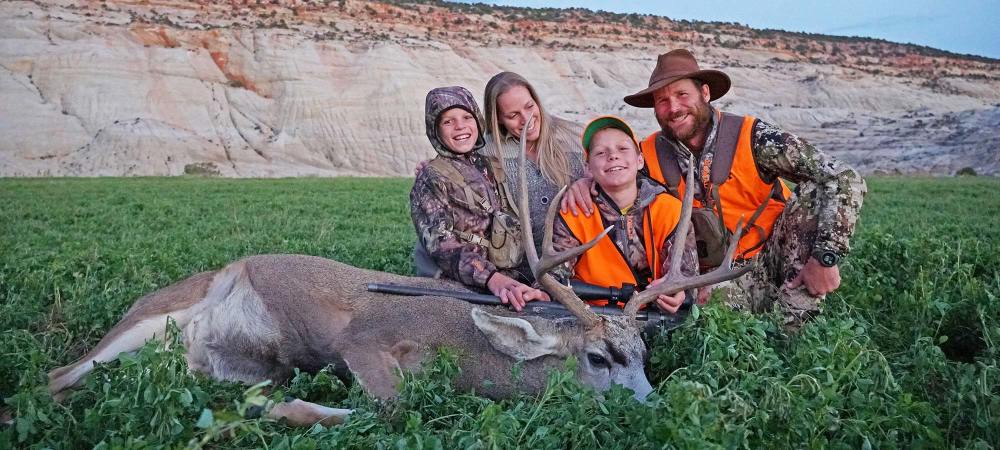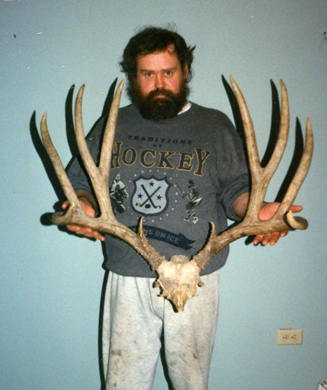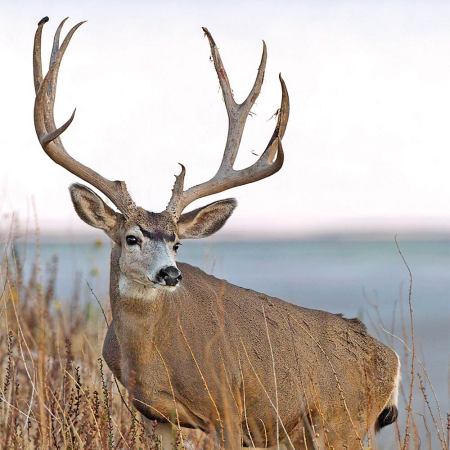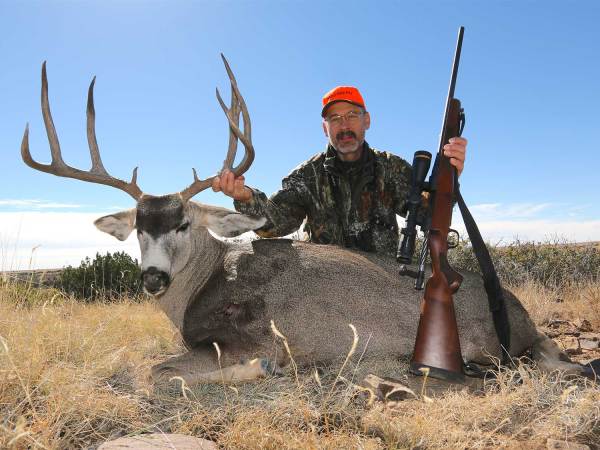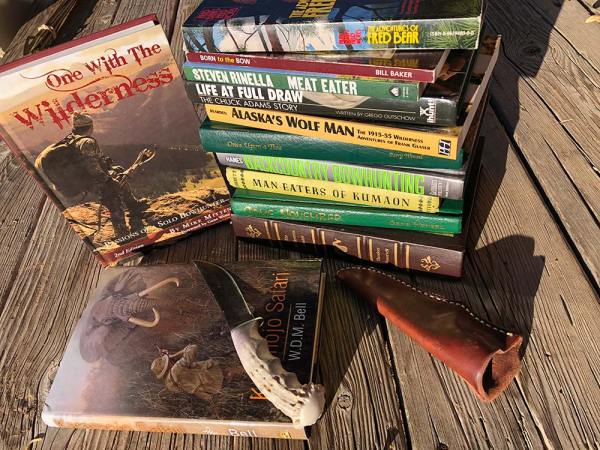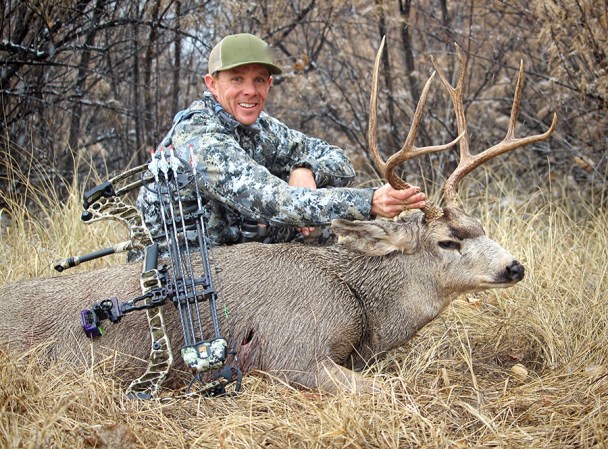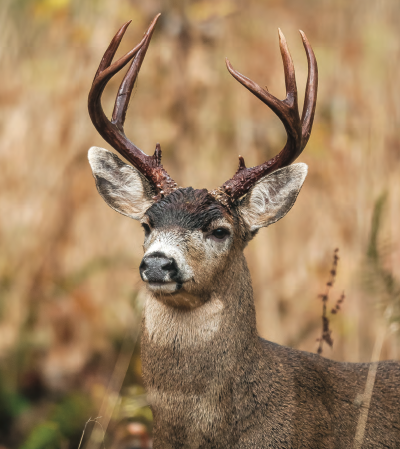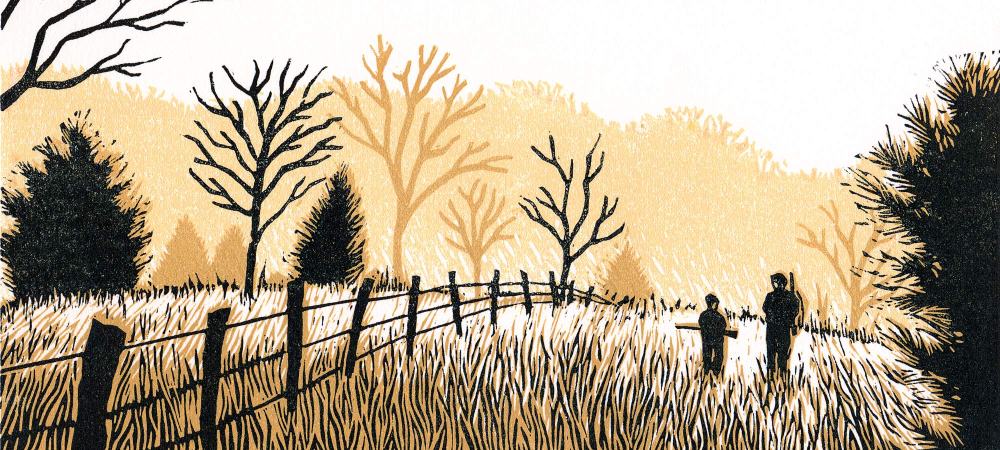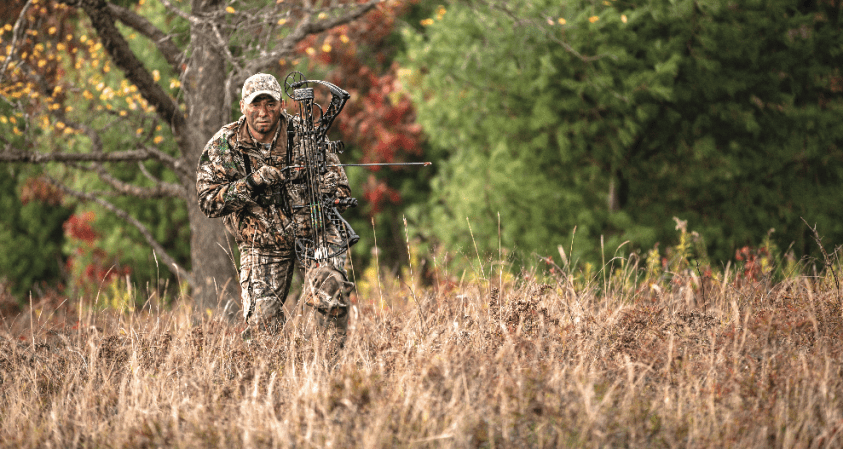This open-coutry buck fell to a persistent hunter glassing tall grass and midday shade under cottonwoods. Photo by Wayne Van Zwoll.
Perhaps it’s time to trade in the ambience of a wilderness muley hunt for better prospects at lower elevations.
Antlers heavy enough to pound nails and wide enough to straddle an oil drum shouldn’t fall to sluggards who rise after dawn and spy the deer over an omelette and buttered toast. But, in truth, eye-popping antlers don’t all come from the wilderness. Indeed, many big mule deer live near people, because living there is easy. No climbing. No lions. No July snowstorms. No wading through early October drifts sure to endure till March. Croplands yield more forage per square yard than deer find in an acre of high rock. Bucks that dodge the automobiles and dogs, and hide when the leaves yellow, grow fat with less wear and tear than their alpine brethren.
More hunters should figure this out. Many do. But few have been fortunate enough to marry into blocks of prime Rocky Mountain winter range or eastern Colorado row crops. And as hunting leases creep north, gobbling up private tracts once open to hunters, access to flatland mule deer has diminished. You must look harder to find sympathetic landowners with hunting rights not already committed. You’ll bump up your odds if you offer to help with farm or ranch work, or even a cash donation. Behave, share venison, cultivate a relationship, and you’ll likely be welcomed back.
But there are other available options—hunt on BLM or USFS holdings or state land. Tribal reservations that allow non-member hunting can also produce handsomely. I routinely take bucks from tribal lands on the northern plains. These reservations require that you engage a tribe-affiliated guide. But one can suffice for several hunters, who can split the cost among themselves.
Picking Pockets
Finding deer in open places tests your glassing ability, patience, and deer savvy. Bucks grow big only after they learn how to hide. Novice hunters too often glass cursorily at distance, across tracts broad enough to swallow herds of bison. A mule deer can vanish behind sagebrush or in a fold of prairie sod. You’ll find deer in the little places they choose carefully from among many little places.
Last fall, for example, I spent an uneventful morning glassing cedar-dotted rims above pasture laced by shallow draws. Crossing one to reach a knob for a better view, I almost collided with a buck. He fell at 23 yards. Another time, watching a herd drift through sage toward a distant ridge, I noticed, with a start, that the buck had vanished. Patiently I eased along the creases wrinkling that prairie. The heavy 4-point burst from a narrow cut, mere feet away. I muffed the first shot, but not the second.
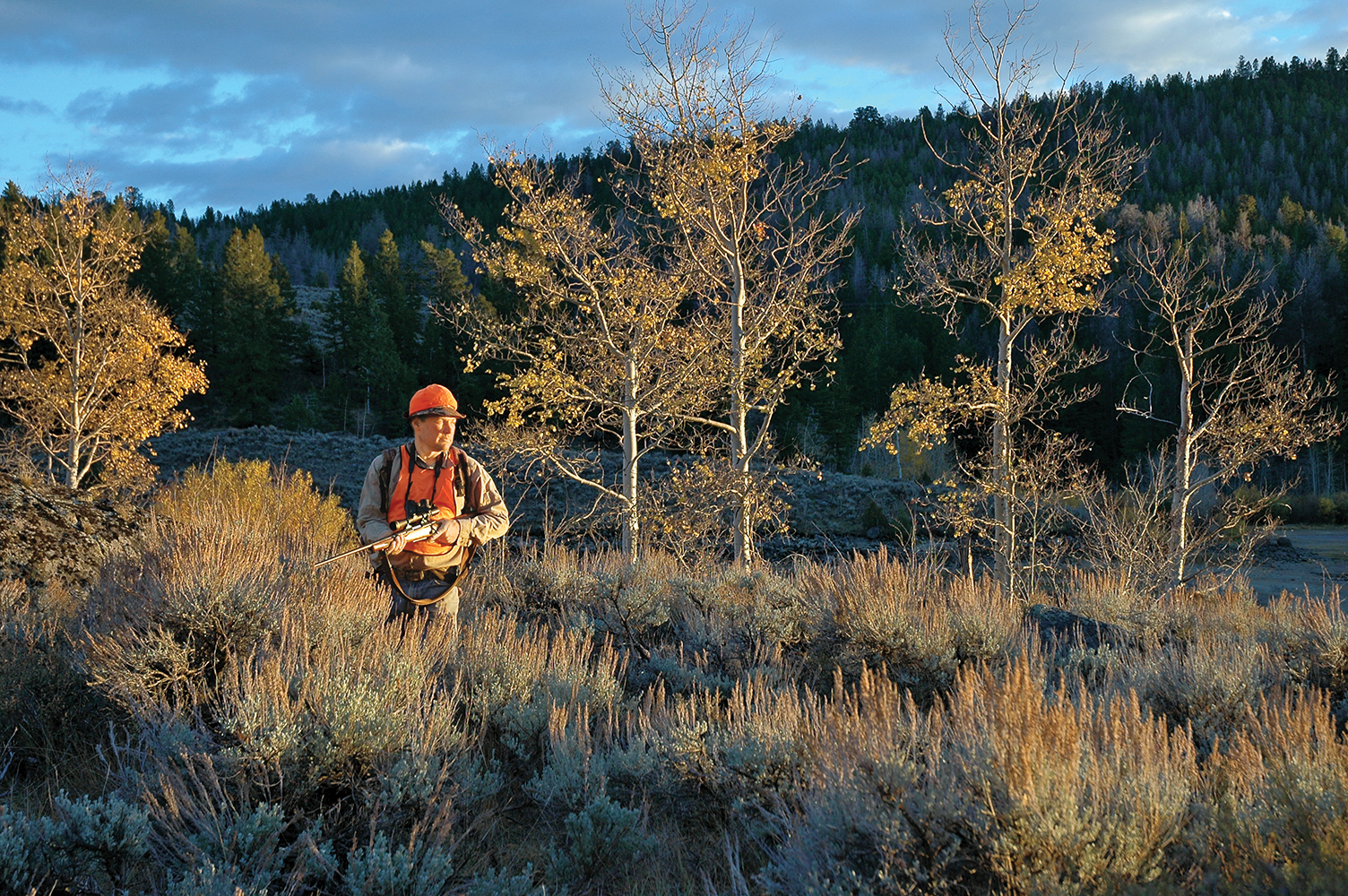
Timber edges in meadows between foothills appeal to late-season bucks bound for winter range. Photo by Wayne Van Zwoll.
Big coulees and patches of trees draw hunters. Old bucks know this and often lie where there’s no distinctive natural feature. A pal who’d spent much of the season in heavily hunted hills killed a fine buck the last evening—while returning to his pickup through a pasture with no visible cover. The deer sprang from a clump of grass. A mule deer hunting lesson learned.
Deer that survive with little cover also know the value of darkness. Hunting early and late, sun to your back, can show you bucks bound for rural gardens.
While hunters toil up forest trails to tree line and beyond, the biggest bucks can fall in a garden near a mall. Therein lies the consolation: A dead deer is merely the aftermath. Then again, a week scouring empty basins can make the kill matter.
